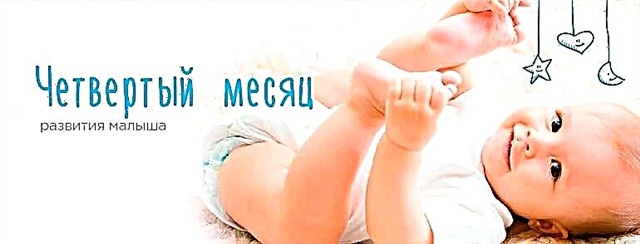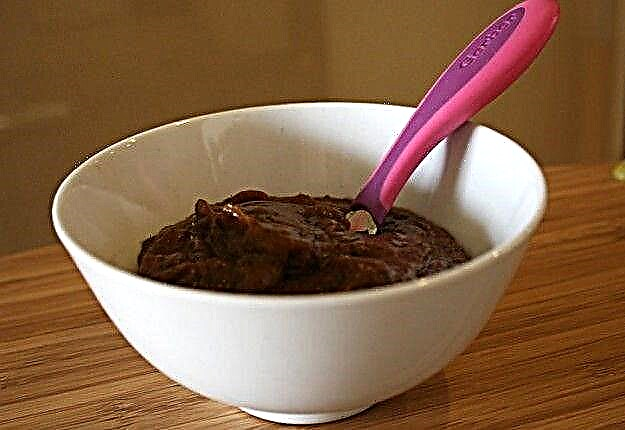
The physical development of a child must go from birth. Parents should always monitor the activity of the baby, no matter how old he is. At the age of 7-8, the child already begins school, and it is especially important for him to move in order to relieve the spine. An important task of gymnastics for a child is the formation of a healthy organism with strong immunity, which will be the foundation for the formation of a comprehensively developed personality.


Features:
Physical activity can include a large number of components that not everyone knows about. Most often, children are offered exercise, which accompanies them at home, in kindergarten and partly at school, but it cannot be limited only to it. School-aged children are already strong enough and tough enough to cope with the more serious challenges of physical education. If parents cannot give a full volume of loads, then morning exercises will be quite a feasible task for everyone.


Gymnastics at home should not be just any physical activity. Parents should choose only feasible and necessary options, on the basis of which they make up a set of exercises. Such classes allow you to get tangible benefits, these are:
- fight against possible obesity;
- preventive measures related to the work of the heart;
- development of the child's musculoskeletal system;
- assistance in eliminating nervous peaks and relaxing the student;
- bringing the body to an optimal working state;
- psychological comfort after training, mood improvement;
- assistance in awakening the whole body and preparation for the working day;
- inclusion of exchange mechanisms.
In order for the child to enjoy the morning exercises every day, it is worth spending it together, because joint activities motivate the child, and the time spent with the parents gives a feeling of satisfaction and happiness. If there is an opportunity to conduct additional activities with the student in addition to charging, this will only benefit. For those who cannot afford it due to work or other nuances, it is imperative to find a sports section for the kid according to their interests.

Gymnastic training rules
For those who can independently engage with the child at home and select all the necessary physical exercises for him, you need to know the basic rules that will help make the lesson not only useful, but also interesting. Not every child is ready to wake up early in the morning and run to do exercises just because it is necessary and useful. Parents often forget that it is necessary to motivate the baby not by shouting, but by deed, or rather, by example.
Those moms and dads who start every morning with even a light set of exercises will very soon find a support group next to them in the form of their own children, who will also want to be beautiful, fit and vigorous in the morning. You should not carry out exercises or gymnastics with a child, using all the same exercises that were designed for an adult. The kid will soon get tired of the monotonous repetition of the same movement, so one of the rules is to focus on the child. All exercises should be fun, matched with accompanying music.
If you manage to create a good mood during training, then you will no longer need to force the child, he will be happy to do it himself.

An additional method that will help interest young athletes can be partner gymnastics, where the exercises will be selected so that they need to be done with a partner. Ideal in this case will be the parent, who will guide and support the baby in the process. The use of active exercises, jumps and dance elements should alternate with slower and more calm movements. Partner gymnastics in this case is ideal, as it allows you to choose a set of exercises for both a child and an adult, helping in the development of certain qualities.
During training, it is worth monitoring the child's well-being and periodically checking his pulse, especially if this is one of the first lessons.
The norm in this case will be a pulse that does not rise above 110 beats per minute, but if the mark reaches 120, it is worth changing the intensity, or even completely eliminating some kind of activity if the child is not yet physically ready for it.


If we talk about the most important rules, then these should be attributed to them:
- morning exercises should be done at the same time during the week;
- the training room must be prepared and well ventilated;
- the form for training a child should be not only comfortable, but also made of natural materials;
- training is carried out an hour and a half after eating, and morning exercises can be done before breakfast;
- a set of exercises designed for a child should include exercises aimed at developing flexibility and coordination, completely excluding strength training;
- it is important to pay attention to the child's breathing during training, you need to inhale through the nose, exhale through the mouth;
- after class, the child should not be tired;
- any long workout is carried out with a warm-up and a hitch;
- working with a child involves constant praise and encouragement during and after training.

Options for assignments for children 7-8 years old
Gymnastics for children 7 years and older is to properly develop all the skills of the child and build a healthy body. Taking into account the age characteristics of junior schoolchildren, their preferences allows us to highlight the most interesting and necessary options for physical activity. Gymnastic exercises that can be done at this age include:
- a set of exercises for the back muscles;
- stretching exercises;
- basic exercise options for the trunk;
- a complex that allows you to restore breathing and finish your workout.


To attract children to sports or just gymnastics at home, it is important to conduct training exercises. These can be all kinds of games and fun activities that will build a positive attitude and at the same time prepare the body for physical work. The younger the children, the more important the role of such activities is. By the age of 9, their number can already be reduced to a minimum, especially if children have been practicing for more than a year.
Sports exercises should be based solely on the level of the child's physical capabilities, it is impossible to give unbearable loads for the sake of a quick result, this will lead to negative consequences in the development of the body. It is especially important to choose the right complex for children with any disabilities. In case of scoliosis, kyphosis, lordosis or other changes, special attention should be paid to the problem area in order to correct it and make the child healthy. Parterre gymnastics will help with this. For babies who begin physical activity after fractures, operations or similar situations, do not give the usual set of exercises. Exercise therapy is provided for them, according to the results of which they can go to the general group and train with other children.
If we talk about the simplest exercises that can be carried out with children of this age, then they include:

For back muscles
- Starting position: kneeling, body upright. Task: raising your arms up and bending back.
- The basic position is the same, but we put our hands on the floor, swing each leg back and up, keeping the knee straight and the back straight.
- The basic position is the same, the task: alternately arch the back with lowering the head and arch the back, with raising the head.

Stretching
- Basic position: legs together, hands on shoulders. Task: simultaneous raising of hands up with a return to the starting position.
- The basic position of the legs is the same, arms up. Task: bend forward, while moving your arms back and up.
- The basic leg stance is the same, arms crossed at the bottom. Task: clenching the hands into a fist, raise them up and stretch well.

For the muscles of the trunk
- Stance: legs apart shoulder-width apart, hands are placed on the belt. Task: bend over alternately to the right and left.
- The basic position of the legs is the same, arms to the sides. Objective: tilting the hand to the opposite leg ("Mill").
- Stand: feet together, hands down. Task: tilt forward and downward with fingers touching the floor.

For recovery
- Steps at an accelerated pace with high knees, which gradually go into slow mode with restoration of breathing.
- Stand: legs apart, hands down. Task: lifting on toes with arms raised up, while you need to inhale and return to the starting position, exhaling.
- Stand: legs apart, hands down. Task: lifting on toes with arms raised up, inhaling and bending down with arms lowering to the floor, exhaling.
These exercises will help your child to be active, healthy and in a good mood.
As you improve, you need to increase the number of repetitions in the exercises and add new ones that are feasible for children of this age.

Tips
In order for a child to study with pleasure, he himself must want it, so you need to find motivation.
- It is best to teach with the whole family, it helps to bring everyone together and make each family member healthier.
- It is important to choose an incentive for a specific child, if a girl is interested in a toned figure to wear the most fashionable things, then the boy will be pleased to develop his body to be proud of his muscles. If your baby has problems with being overweight, it is important to encourage him to deal with the problem himself, and not to offend and blame the child.
- It is important to show the child an idol whom he can imitate, so that he can see in practice the benefits of physical exercises, from which body and spirit become strong.
- If there are several children in the house, then the elder can be motivated to do exercises or gymnastics in order to be able to protect his sister or brother, having a strong body and fast legs.
- Conversations about health, beauty of the body and sports will contribute to the child's interest in this problem, so do not forget to conduct such preventive conversations.
- To increase interest in exercise or workout at home, you can come up with a set of exercises with a ball, a hoop, a gymnastic stick, a skipping rope or jumping on a trampoline, you can introduce them into the training process.

Knowing the characteristics of your baby and the desire to grow a full-fledged and healthy person out of him will allow any parent to interest the child in exercises or gymnastics. Conducting joint training will strengthen the child's connection with adults, learn to trust each other, listen and understand each participant in a sports event.
Exercises for children 7-8 years old, see below.



